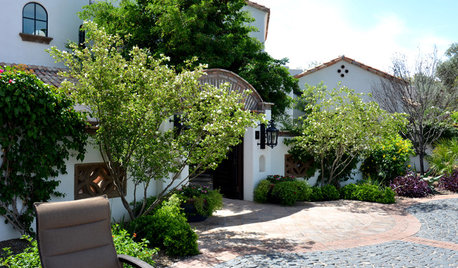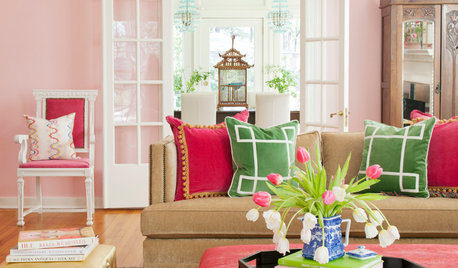Cleveland Flowering Pear Tree
garden_2006
17 years ago
Related Stories

SPRING GARDENING7 Spectacular and Practical Spring-Flowering Trees
Put on a beauteous show in the garden with a landscape tree awash in flowers — just do your homework first
Full Story
TREES7 Deer-Resistant Flowering Trees to Plant this Fall
If you live in a neighborhood with roaming deer, consider these beautiful trees that won't tempt hungry guests
Full Story
EDIBLE GARDENSWhy Grow Quince? For Beauty, Fragrance and Old-Time Flavor
Delightfully perfumed fruit and lovely spring blossoms make this apple and pear cousin worth a spot in the garden
Full Story
GARDENING GUIDESPlant Black Cherry Trees for the Birds and Bees
Plant Prunus serotina in the Central and Eastern U.S. for spring flowers, interesting bark and beautiful fall color
Full Story
GARDENING GUIDESAttract Hummingbirds and Bees With These Beautiful Summer Flowers
Roll out a welcome mat for pollinators to keep your landscape in balance and thriving
Full Story
FALL GARDENING11 Trees for Brilliant Fall Color
Give your landscape the quintessential look of autumn with the red, orange and yellow leaves of these standouts
Full Story
GARDENING GUIDESVegetables and Flowers Mix in Beautiful Edible Gardens
Ornamentals, meet your edible garden mates. We know you'll get along just beautifully
Full Story
FLOWERS AND PLANTSBauhinia Lunarioides Perfumes the Garden With Its Fragrant Flowers
Bees and butterflies flock to this Texas shrub’s white and pink flowers in spring and summer
Full Story
COLORFlower Power: Pick Your Palette From Posies
For no-fail color combinations, take your cue from Mother Nature
Full Story
LANDSCAPE DESIGNPretty Trees for Patios, Paths and Other Tight Spots
Choose trees for their size, shape and rate of growth — or shape them to fit your space. Here's how to get started
Full StoryMore Discussions







quirkyquercus
garden_2006Original Author
Related Professionals
Fort Lee Landscape Architects & Landscape Designers · Port Royal Landscape Architects & Landscape Designers · Towson Landscape Architects & Landscape Designers · Arden-Arcade Landscape Contractors · Brockton Landscape Contractors · Burlington Landscape Contractors · Cliffside Park Landscape Contractors · Cupertino Landscape Contractors · Dickinson Landscape Contractors · Manhattan Landscape Contractors · Oregon City Siding & Exteriors · South Plainfield Siding & Exteriors · West Milford Siding & Exteriors · High Point Decks, Patios & Outdoor Enclosures · Portland Decks, Patios & Outdoor EnclosuresIris GW
quirkyquercus
garden_2006Original Author
quirkyquercus
terryr
marklo
quirkyquercus
mamoo_z5
lucky_p
dmoore66_gardener
pineresin
quirkyquercus
quirkyquercus
katrina1
katrina1
quirkyquercus
bdude4
krootie
rcnaylor
tripletfarm_embarqmail_com
Pam_loves_2_garden